
- Source: VOGUE
- Author: NATALIE SHUKUR
- Date: AUGUST 20, 2019
- Format: DIGITAL
Who Speaks for the Bees?
An Environmental Art Dinner Raises the Question
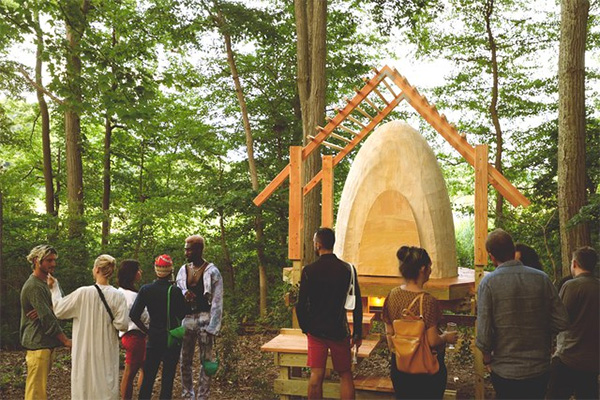
Terence Koh’s Bee Chapel. Photo courtesy of Ola Ola Studio
Next time you pour almond milk in your coffee, spare a thought for the bees. Almonds are one of America’s largest monocrops, providing more than 80% of the world’s supply. Like onions, apples, avocados, cucumber, lemons, and watermelon, almond crops require wild honeybees to pollinate them, and because the naturally occurring honeybee population doesn’t come close to meeting the demand, millions of hives are shipped across the country each year to make up the massive gap. Monocultures, which grow huge expanses of only one crop year after year, have been directly linked to bee die-off as well as the spread of bee diseases. And, while transporting bees to pollinate crops has been practiced for centuries—in ancient Egypt, hives were floated down the Nile—current commercial migrations, so staggering in scale, are causing a dwindling bee population, one that has evolved from an unsettling trend into a serious threat to food production and human viability on Earth.
At two ethereal, multidisciplinary dinners this past weekend at Farm River Farm in New Haven, Connecticut, curator Caroline Maxwell and chef Jen Monroe made a compelling case for the insects’ plight through their Salon series, “Balling the Queen: Exploring Honeybees, Consumption, and Collapse.”
“I’ve always been interested in the ways pleasure can be a gateway for substance,” says Maxwell. “It’s how I approach all of the projects I work on. Over the last couple years, I’ve been curating and producing large scale public art projects and I’ve made it a priority to be really conscious about the messages I’m sending to an audience.” With the Salon Series, Maxwell realized her desire to create a more intimate event focused on environmental and social concerns. Food was the obvious pleasurable and approachable medium for exploring new perspectives on dense topics that can otherwise feel alienating, uncomfortable, or complex to discuss.
Maxwell enlisted conceptual artist Terence Koh to create the first site-specific permanent version of his Bee Chapel installation, originally conceived in 2015 on his property in upstate New York. Throughout the evening, guests meandered toward the domed, beeswax-coated single-occupancy structure, glasses of pink mead from Enlightenment Wines in hand, to step inside and commune with the bees, which are separated from visitors by steel mesh, and can fly outside to gather pollen via plastic tubes. The dinners also featured flowers by Fleurotica, custom S-shaped tables by Joda, and a looping soundtrack by CEP (aka Caroline Polachek) that evoked the vibrational hum of a beehive. Farm River’s bucolic setting overlooking the Long Island Sound—where owners Kit Luckey and Charles Hickox grow vegetables, look after chickens and donkeys, and keep an apiary housing swarms of bees—was the perfect backdrop for guests to retreat from the city and connect with the natural world.
Monroe’s six-course sensorial dinner began with local sourdough from Atticus bakery, which guests were encouraged to dip into burning candles made entirely from beef tallow. “Picking bee-pollinated foods to highlight was actually a challenge, as there are so many I would have loved to include,” she says. “Many of the foods on the menu are crops that require or benefit measurably from bee pollination, including cucumber, kabocha squash, buckwheat (in the noodles and cookies), garlic, onion, parsley, cabbage, cardamom…and of course, all of the edible flowers. I also wanted to use honey in less typical applications, so I topped the chilled soba dish with burnt honey crystals and used it to sweeten a rose mascarpone panna cotta.” Monroe preserved cherries in thick layers of beeswax as party favors and sent out several courses that were made to look like flowers. “I realized as I was typing it up, that if bees liked to eat human food, this might very well be their dream menu.” Monroe gathered much of the produce from the property’s backyard. “Being able to go outside to harvest onions, scallions, cucumbers, tomatoes, and peppers still warm from the sun was pretty spectacular, and a huge jumping off point for the menu. Most of Fleurotica’s floral arrangements were sourced from the farm as well.”
Bringing together a small group of artists, chefs, scientists, farmers, beekeepers, and academics, Balling the Queen approached the honey bee crisis as the bridge to a wider conversation about social and ecological issues. “What makes our relationship with bees so valuable is that their health tells us a lot about what’s going on with our environment, and when they get sick or start to die off, we notice it more easily than we notice changes in other insect populations,” says Monroe, who advises “making meadows not lawns” to encourage wildflower growth (and sent guests home with seed-filled vials to scatter), eating local produce to support polyculture, placing a bee brick in your yard to invite bees to nest, and buying local honey. “Our perceptions of normalcy with regards to the natural world are changing faster than ever, right under our noses,” she says. “Being engaged with how your food is grown is an excellent way to stay curious.”
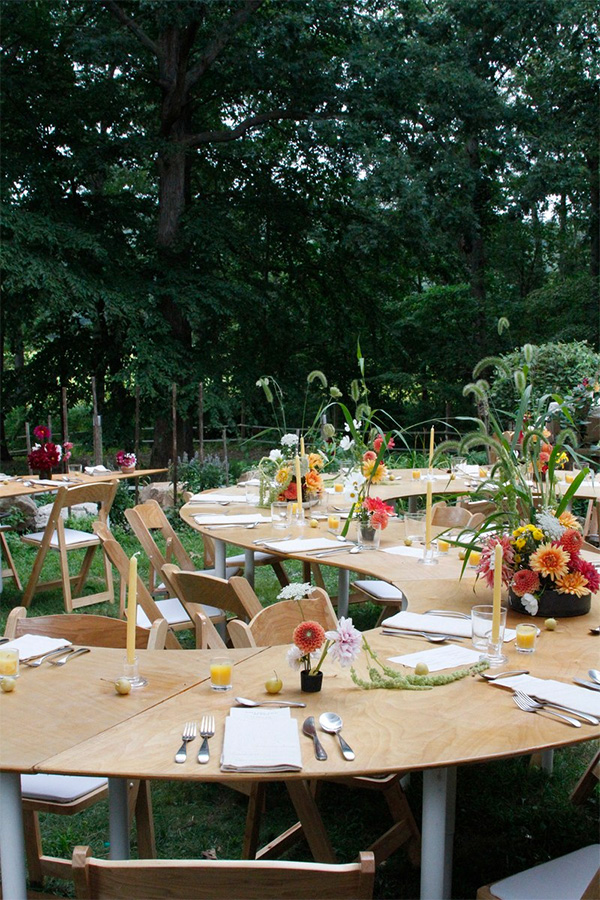
Farm-foraged floral design by Fleurotica; custom table design by JODA. Photo courtesy of Ola Ola Studio

Menu printed on biodegradable wildflower paper. Photo courtesy of Ola Ola Studio
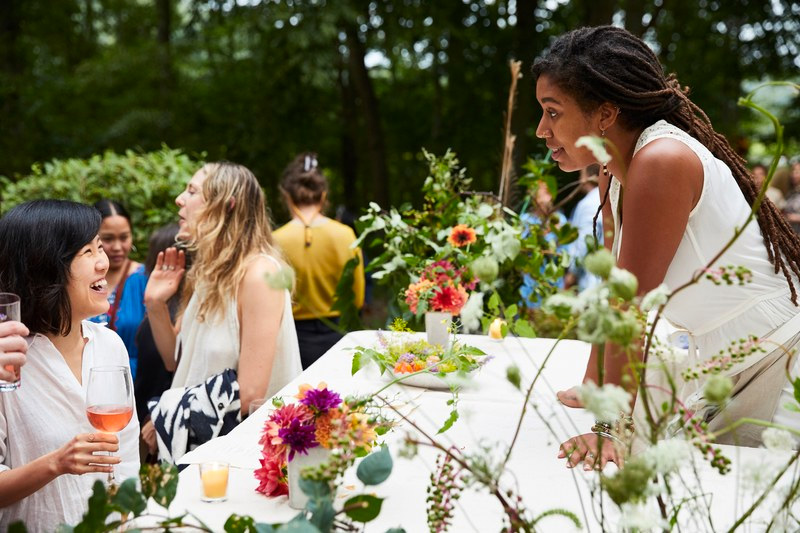
Guests at dinner. Photo courtesy of Johnny Fogg
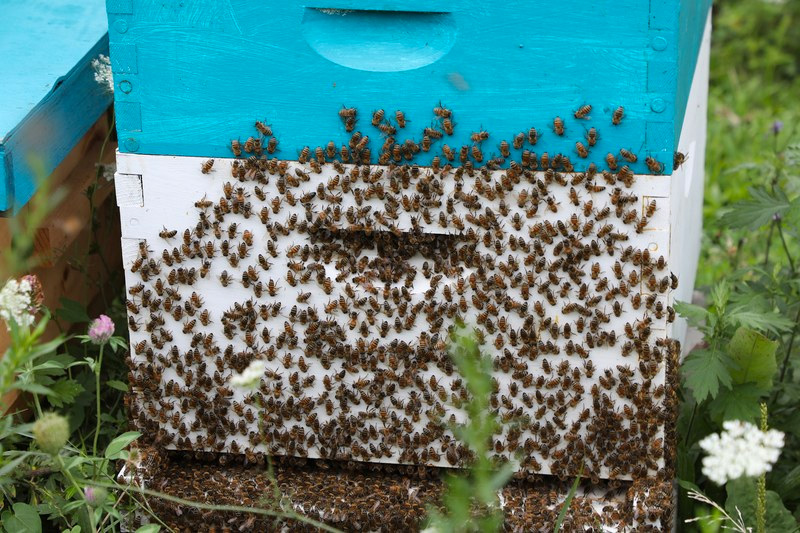
One of 20 honeybee hives on Farm River Farm. Photo courtesy of Ola Ola Studio
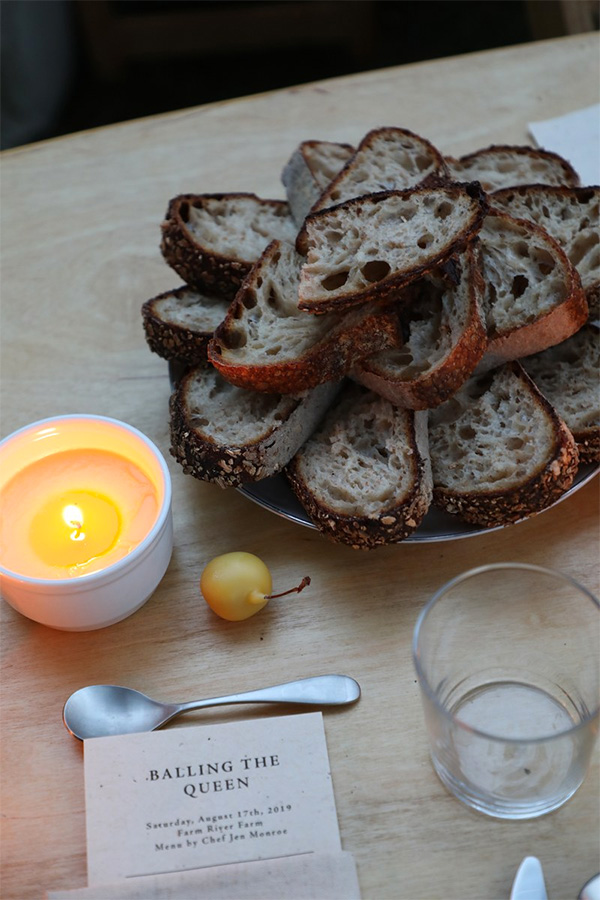
Atticus white country and porridge bread, beef tallow candle, urfa biber, garlic and herbs. Photo courtesy of Ola Ola Studio
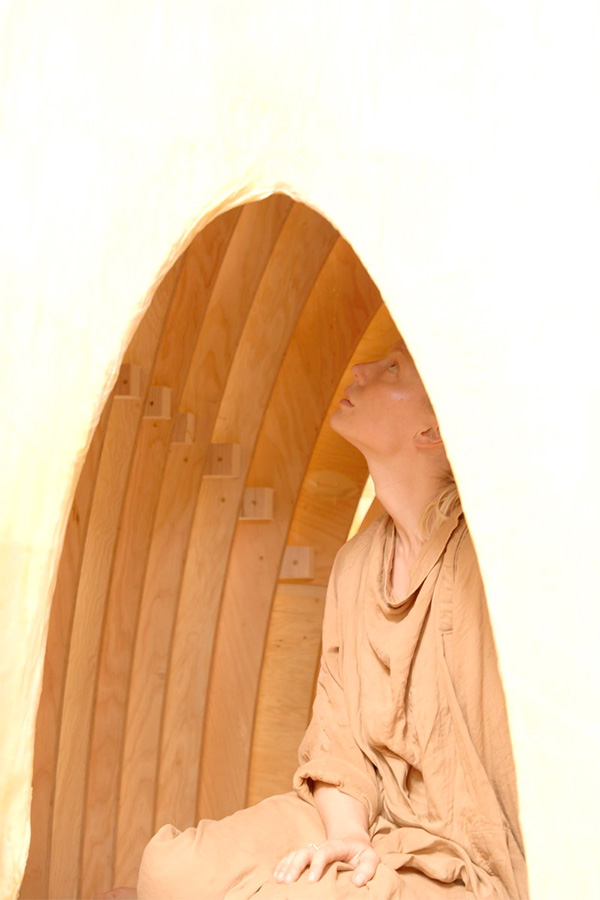
Robin Hilleary of Fleurotica inside the Bee Chapel. Photo courtesy of Ola Ola Studio
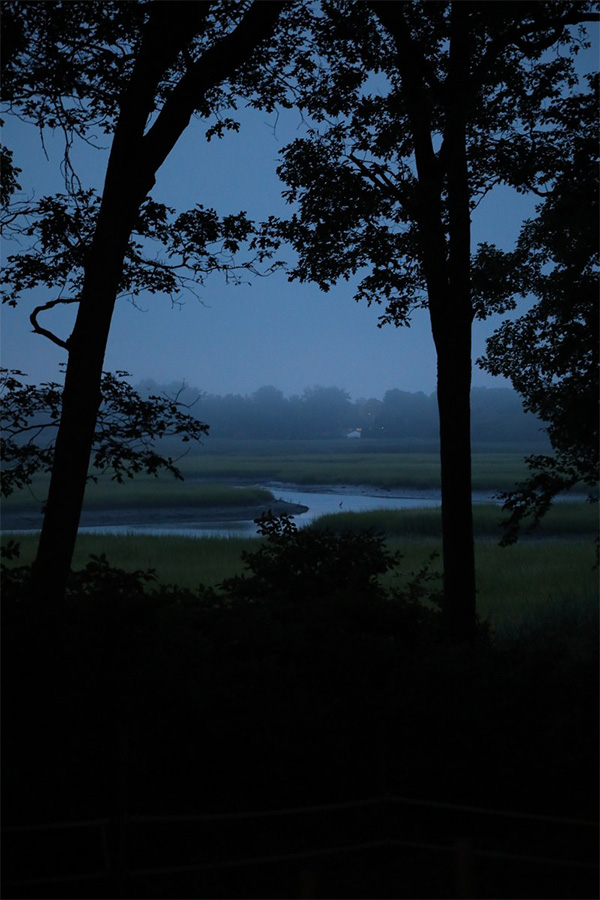
The view over the Farm River. Photo courtesy of Ola Ola Studio
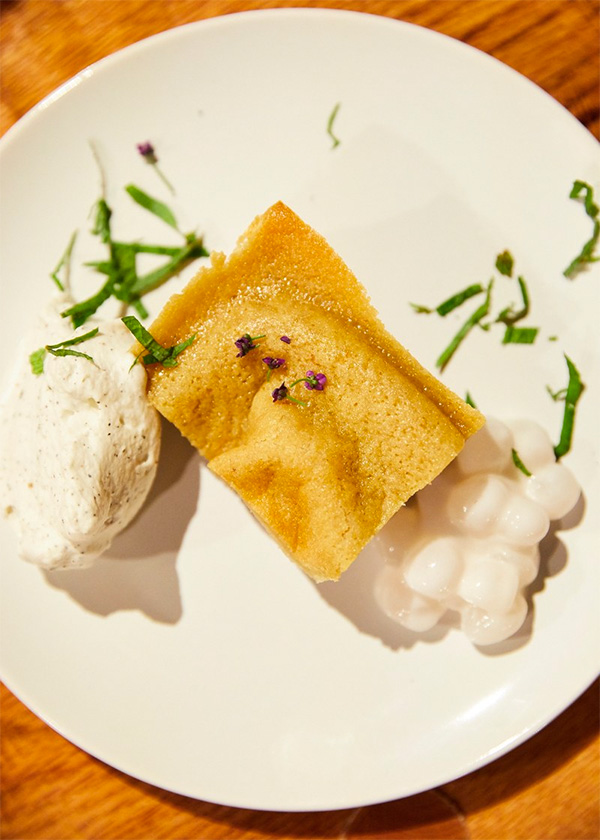
Malaysian honeycomb cake, black cardomom, hojicha chantilly, coconut tapioca. Photo courtesy of Johnny Fogg
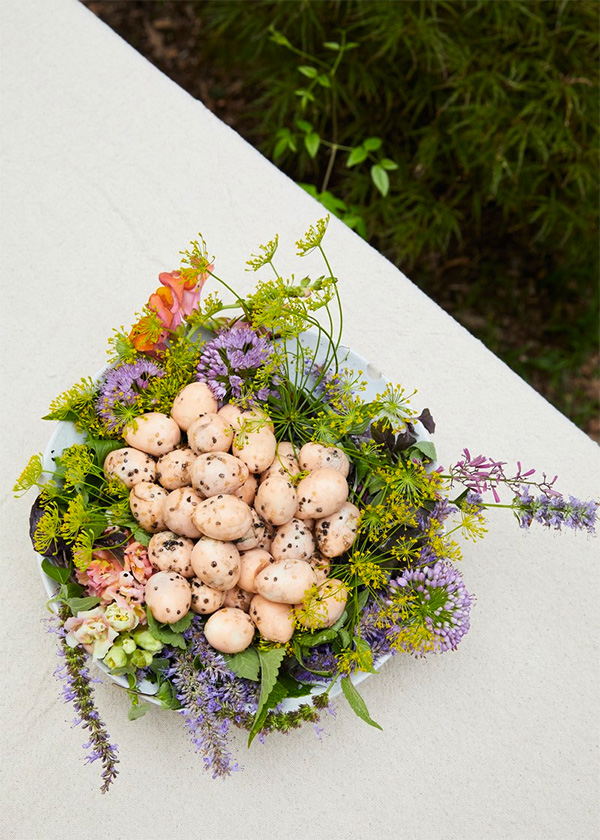
Amuse bouche: Nested Quail tea eggs, smoked sugar, black salt. Photo courtesy of Johnny Fogg
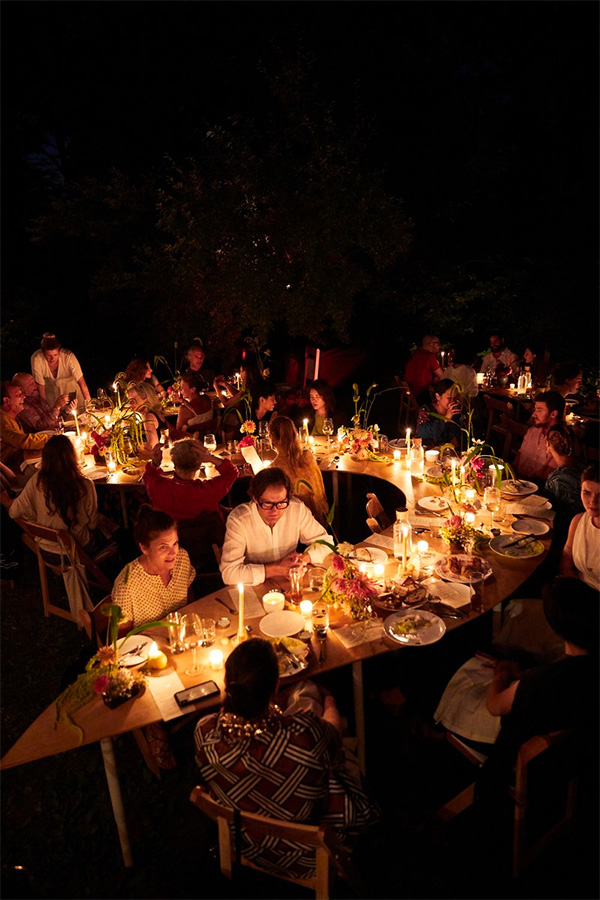
Serpentine table illuminated by beeswax candles. Photo courtesy of Johnny Fogg

